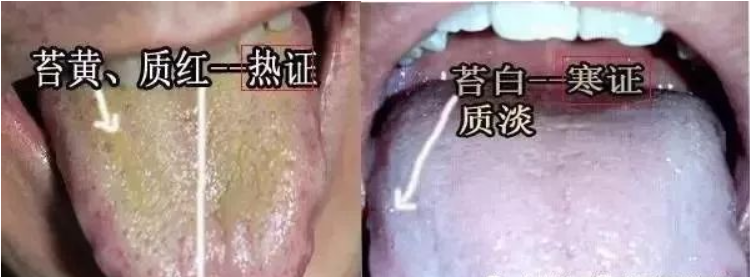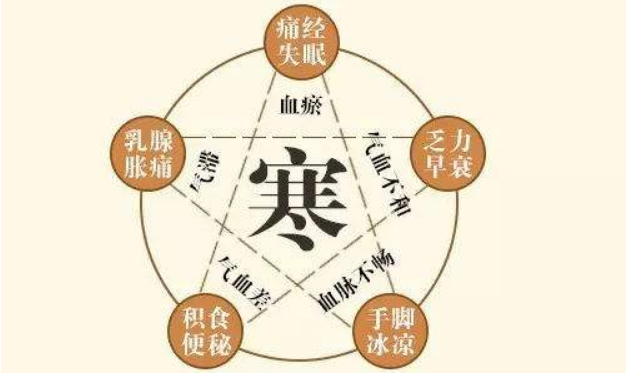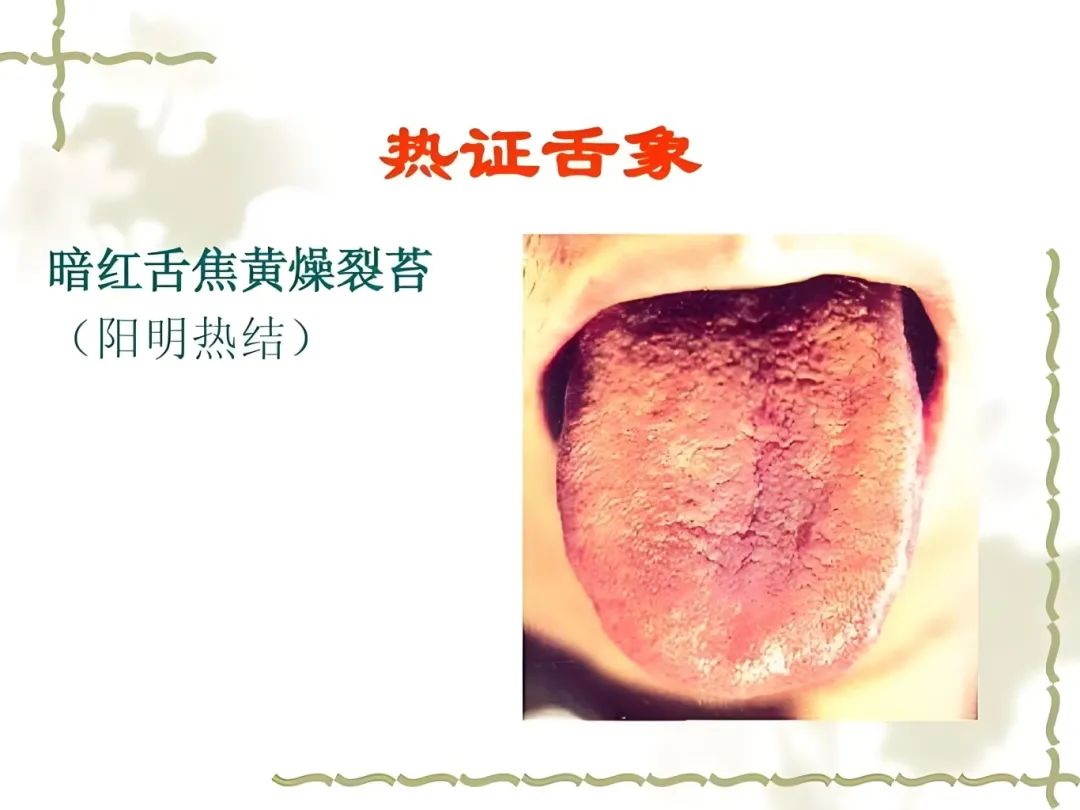 Click the blue words to follow us
Click the blue words to follow us

Cold and heat are the two fundamental categories for distinguishing the nature of diseases, summarizing the two types of syndromes reflecting the balance of Yin and Yang in the body. Generally speaking, cold syndromes are manifestations of insufficient Yang Qi or the invasion of cold pathogens, while heat syndromes are manifestations of excessive Yang Qi or the invasion of heat pathogens. As the saying goes, “When Yang is excessive, there is heat; when Yin is excessive, there is cold. When Yang is deficient, there is cold; when Yin is deficient, there is heat.” Distinguishing between cold and heat is the basis for using warming or cooling medicines in treatment, as stated, “Cold is treated with heat, and heat is treated with cold.” Cold Syndrome
Cold Syndrome

Cold syndrome is characterized by the invasion of cold pathogens (such as cold and dampness) or the deficiency of Yang Qi, leading to an excess of Yin, resulting in weakened organ function and reduced activity. It can be divided into exterior cold syndrome and interior cold syndrome. The exterior cold syndrome has been discussed under exterior syndromes; here we refer to interior cold syndrome.
Main symptoms: aversion to cold, cold limbs, no thirst or preference for warm drinks, pale complexion, cough with white phlegm, abdominal pain relieved by warmth, loose stools, clear and frequent urination. The tongue is pale with a white coating, and the pulse is deep and slow.
Pathogenesis: Yang deficiency leads to an excess of Yin, causing aversion to cold and cold limbs. The coldness in the spleen and stomach causes abdominal pain relieved by warmth, and the Yang Qi is weak, resulting in a deep and slow pulse.
Treatment principle: Warm the middle and dispel cold.
Commonly used formula: Fu Zi Li Zhong Tang (Aconite Decoction to Regulate the Middle).

 Heat Syndrome
Heat Syndrome

Heat syndrome is characterized by the invasion of Yang heat pathogens (such as wind, heat, fire, etc.) or an excess of Yang Qi with a deficiency of Yin, leading to excessive Yang Qi in the organs and a loss of Yin fluids, resulting in increased organ activity. It can be divided into exterior heat syndrome and interior heat syndrome; the exterior heat syndrome has been discussed under exterior syndromes, and here we refer to interior heat syndrome.
Main symptoms: fever, no aversion to cold, irritability, thirst with a preference for cold drinks, flushed face and red eyes, cough with yellow and thick phlegm, abdominal pain relieved by coolness, constipation, and short, red urination. The tongue is red with a yellow coating, and the pulse is rapid.
Pathogenesis: Excessive Yang heat leads to fever and a preference for coolness, heat injures body fluids causing thirst, short and red urination, and constipation. The rapid pulse indicates excessive heat.
Treatment principle: Clear heat.
Commonly used formula: Bai Hu Tang (White Tiger Decoction) and others.
 Excess Heat vs. Deficient Heat
Excess Heat vs. Deficient Heat
Excess heat syndrome caused by the invasion of heat pathogens differs from deficient heat syndrome caused by the loss of Yin fluids or excessive organ activity, with distinct clinical manifestations and treatment principles.
Excess heat syndrome has an acute onset and a short course. Symptoms include high fever, aversion to heat, profuse sweating, confusion, and in severe cases, delirium. There is intense thirst and a preference for drinking. Coughing up yellow and thick phlegm, purulent phlegm, or blood-streaked phlegm. Constipation, short and red urination. Flushed face and red eyes. The tongue is red with a thick yellow coating, and the pulse is rapid and forceful. Excessive heat is often caused by heat pathogens (such as infections). Treatment involves clearing heat and draining fire.
Deficient heat syndrome has a slow onset and a long course. Symptoms include low fever, tidal fever, night sweats, five hearts heat, insomnia, and vivid dreams. Dry mouth with little drinking. Scanty, sticky phlegm, or phlegm with blood streaks. Small volume of stool, yellow and scanty urination. Flushed cheeks. The tongue is red with little or no coating, and the pulse is thin and rapid. This is due to the consumption of Yin fluids and internal deficiency. It is often caused by excessive organ activity. Treatment involves nourishing Yin and clearing heat.
True Cold vs. False Heat
In the critical stages of disease development, where cold or heat extremes are reached, one can observe phenomena such as “true cold appearing as heat” and “true heat appearing as cold.” Clinically, a condition that is essentially a heat syndrome but presents with cold symptoms is termed “true heat, false cold,” while a condition that is essentially a cold syndrome but presents with heat symptoms is termed “true cold, false heat.” This situation often indicates a more severe disease. If the essence is not grasped, one may be misled by the false appearance, leading to misdiagnosis and mistreatment.
01“True Cold, False Heat” For example, in patients with chronic wasting diseases, one may often see body heat, flushed cheeks, restlessness, black coating on the tongue, and a rapid pulse. On the surface, this appears to be a heat syndrome, but the patient prefers warmth and covers themselves, showing a spirit of fatigue and indifference, curled up in bed, with a pale tongue and a black and moist coating. Although the pulse is rapid and forceful, it is weak. This indicates an excess of Yin internally, with Yang being constrained externally, and the essence is still a cold syndrome, hence termed “true cold, false heat.” Treatment should focus on warming the interior and reviving Yang, guiding fire back to the source.02“True Heat, False Cold”
This refers to a condition where true heat is present internally but appears as false cold externally. For instance, in severe heat-related illnesses, one may observe a lack of expression, drowsiness, reluctance to speak, cold hands and feet, and a deep and thin pulse, which superficially resembles a cold syndrome. However, there is also heat in the mouth and nose, burning sensation in the chest and abdomen, thirst with a preference for cold drinks, constipation, and short, red urination. The tongue is red and dry with a yellow coating, and the pulse, although deep and thin, is rapid and forceful, indicating that internal Yang heat is constrained and cannot express outwardly. The essence is a heat syndrome, hence termed “true heat, false cold.” Treatment should focus on clearing internal heat and promoting Yang Qi.
Thank you for reading. Wishing you health.
